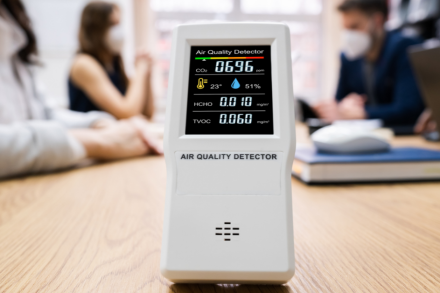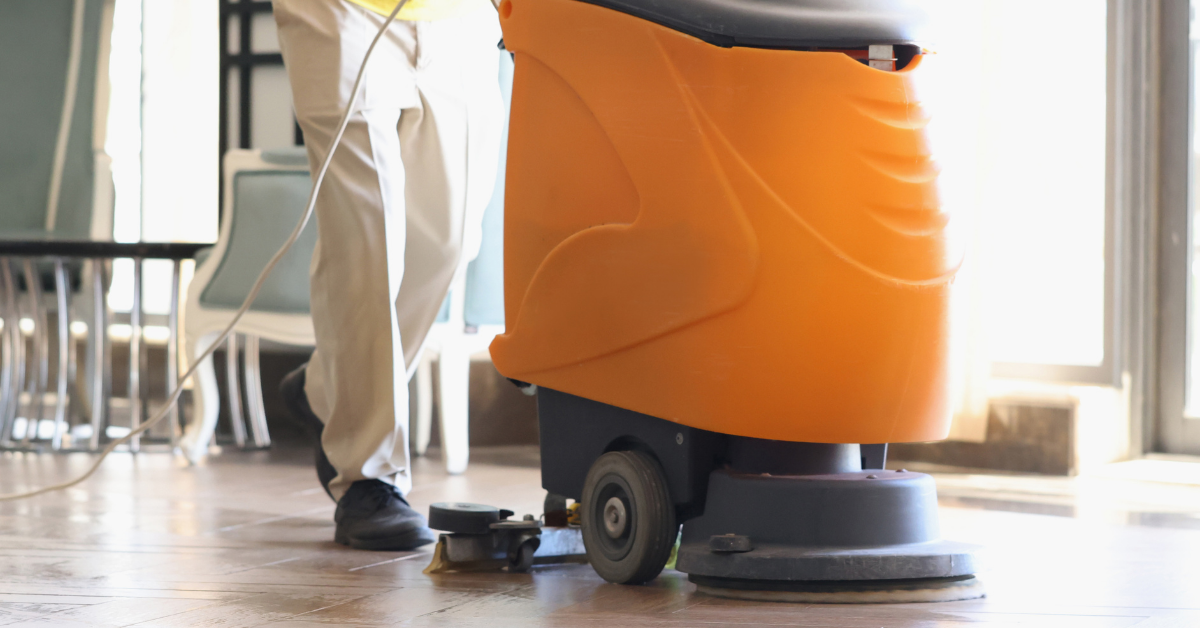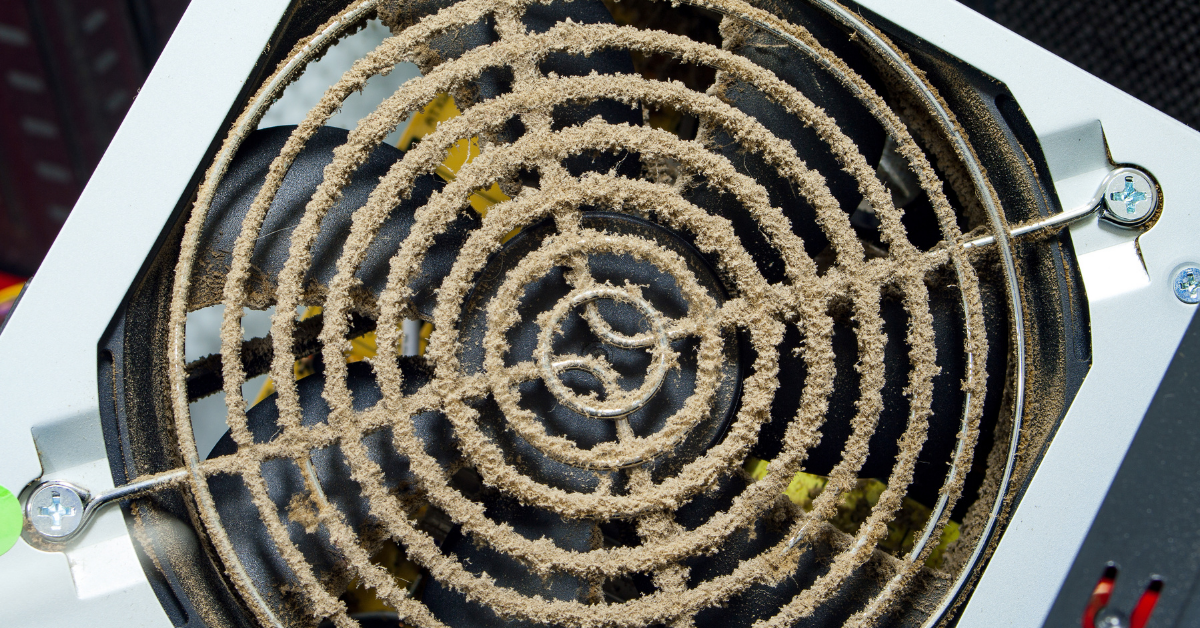
The US Environmental Protection Agency reports that pollutants can be two to five times more concentrated indoors than outdoors. Since we spend most of our time indoors, it is important to have high-quality indoor air.
If you are concerned about the overall comfort, productivity and health, and safety of your employees, it is crucial to consider both indoor air quality (IAQ) and the indoor environment of your workplace.
Keep reading to learn how health problems can be impacted by IAQ and how thorough evaluation can help improve the comfortability and productivity of a workplace.
Factors That Cause Poor IAQ
Several risk factors can result in poor IAQ or workplace environment. Here are some of the major signs to look for so you can be sure you are providing that comfortable and healthy indoor workspace.
Cleaning Supplies & Building Maintenance Products
Certain cleaning supplies and products used to maintain your building may result in employees becoming concerned about the healthiness of their workplace.
Unfamiliar odors from these chemicals can be a cause for concern, especially from materials that are not used frequently such that they are foreign to the folks that work there.
Materials like floor strippers, stain or spot removers used on carpeting, paints and strong cleaning solutions, paint and even the replacement of office furniture and carpet can all affect the way employees perceive their work environment and they may perceive that it affects the environment in a bad way.

Mold
If your workplace has higher temperatures, water damage, humidity, and/or dampness, there is a higher risk of mold developing. Preventing mold is a key step in maintaining a healthy workspace, as mold is the number one issue we receive complaints about.
Even though mold is the number one indoor workspace issue we are contacted about, it is rarely the cause of any issues employees are having. Unfortunately, diagnosing a potential mold problem requires a rigorous sampling regimen to adequately assess the situation.
Asbestos
Although there have been major efforts over the last 50 years to remove asbestos from occupied buildings, there are still many older buildings (those built before the 1970s) that may still contain asbestos.
Inhaling asbestos can be dangerous but the presence of Asbestos in a building can be managed effectively once it is identified.
There are dozens of building materials that at one time contained asbestos so if you believe that your building contains asbestos, it is probably worthwhile to have it evaluated to see if there are any Asbestos Containing Building Materials (ACBM) present.
Other Issues Affecting Perceived IAQ Issues
There are a host of other issues that can affect the indoor work environment:
- Poorly installed or inoperable exhaust fans in bathrooms and kitchens
- Poor housekeeping practices
- A HEPA vacuum cleaner with a dirty, clogged, or non-HEPA filter
- Not even using HEPA filtered vacuum cleaners
- Poorly designed or maintained HVAC systems
- Incorrect or inadequate filters in those systems
- Lack of inspections and maintenance of those systems
…And the list goes on.

Workplace-Specific IAQ Considerations
The potential risk factors for IAQ vary depending on the kind of work your business does. These are a few different sectors that could have IAQ issues and the risk factors associated with them.
Medical Offices and Hospitals
Health care facilities have to take special care to maintain good IAQ. This is because patients with infections can spread microbes to other patients and employees, endangering the health of everyone in the building. They may also have any of the issues noted above that can occur in any indoor environment.
Schools
Keeping children safe should always be a priority, which is why good IAQ at schools is so important.
The majority of IAQ complaints we receive from schools originate from faculty members and the majority of those complaints are regarding mostly non-specific symptoms that can not be readily associated with any one issue.
Troubleshooting IAQ complaints in schools can be very tricky as they generally are the result of issues that are not obvious and in many cases, the cause is the result of a confluence of issues and not one specific condition.
Another problem, in many cases, is that these issues are not addressed early on in the process so by the time we get involved the issue has taken on a life of its own and it makes it that much more difficult to get those involved to focus on the real issue so a solution can be reached.
We have devised a model for how to handful these situations that focus on interviews with building occupants to help triage the problem and devise a sampling/testing plan to help try to get to the root cause of the problem.
We are successful at solving the problem almost every time.
{{cta(‘aed9e8ff-2c0f-4bc1-bf5e-e554da753d06’)}}
Health Problems Related to Poor IAQ
Poor indoor air quality can cause several health issues in the both long and short term. If your employees work in an environment that is not supplied with good quality air, it could seriously affect their health. Here are a few of the issues that can result from exposure to polluted indoor air.
Respiratory Infections
These infections can include the flu, chronic sinusitis, chronic bronchitis, and others. Some symptoms of these infections are cough, sore throat, and difficulty breathing.
We often hear about the cold that “never goes away” or the cold that “keeps getting past around the office and keeps coming back.”
Lung Infections
Lung infections can be even more severe than respiratory infections and can include serious conditions such as lung cancer, COPD, and cystic fibrosis, among others. These are more permanent conditions that will likely affect the exposed individual for the rest of their life.
These diseases can progress slowly, so the earlier they are caught, the better the outcome can be. Some early symptoms are wheezing and shortness of breath, so if you think you might have had long-term exposure to pollutants and experience these symptoms, you should seek medical help right away.
Asthma
Poor IAQ can also cause asthma. Furthermore, it can exacerbate asthma in those who already have this condition. Pollutants that can be found in the air can trigger an asthma attack, which presents as wheezing, chest pain, and shortness of breath.
What’s more, if an individual with asthma is exposed to indoor air pollutants over a long period, it can weaken their immune system. This can also cause them to be more susceptible to heart disease.
Inflammation
Long-term exposure to poor indoor air quality also results in inflammation in the body. This inflammation increases the risk of a host of other illnesses. For example, air pollution has been tied to insulin resistance, which means it can result in conditions such as type 2 diabetes.
Improving IAQ
Now that you have an understanding of some of the causes and health consequences of IAQ, you may be wondering how you can improve the air quality at your workplace. Here are a few steps you can take to help provide a quality work environment for your workers which includes high-quality air.
Ventilation
One of the best ways to improve and also maintain good air quality is to ensure that there is properly designed, adequate ventilation in the indoor space.
This will avoid a host of issues that can contribute to poor air quality.
The old expression, “Dilution is the solution to pollution” could not be more appropriate than it is right here. The more fresh outdoor air there is introduced to the space, the less likely there will be to have elevated levels of harmful contaminants, carbon dioxide (which we all breathe out), odors, or potentially annoying materials that will draw attention to the poor air quality.
The easiest way to do this is to make certain that there is a properly designed, installed, maintained, and serviced HVAC system that is fully operational at all times that the building is occupied. If you are located in an appropriate location, being able to open doors and windows, if the weather allows, is also helpful.
HVAC systems can improve IAQ because they have outdoor air intake. This means that they bring outside air inside, which is one of the most efficient ways to improve indoor air quality.

Reduction of Pollutants/Providing Comfort
The most effective way to improve IAQ is to address its source. This can range from creating a no-smoking policy at your workplace or having it inspected for mold and asbestos and other potential sources of concern, based on input from building occupants.
It is also a great help to use cleaning products and other maintenance products that are low odor and environmentally friendly as those products are less likely to contain ingredients that will result in employee complaints.
Regarding employee comfort, i.e., temperature and relative humidity, the HVAC system used for the space should control both of those recommended guidelines by local health officials or guidelines provided by ASHRAE (The American Society of Heating, Refrigeration and Air Conditioning Engineers).
Ready to Take the Next Step?
After learning about all the potential risks and causes of poor IAQ, and the need for employee comfort that will provide a safe, healthy and comfortable work environment for your employees, you might be ready to evaluate the quality of your indoor workplace and then implement some of the strategies mentioned above. Your workspace will not only be healthier but more comfortable and your employees much more productive!
If you would like for your workplace to be evaluated for risks to indoor air quality, please contact us today. We would be happy to inspect to find out if the air at your workplace is safe.








